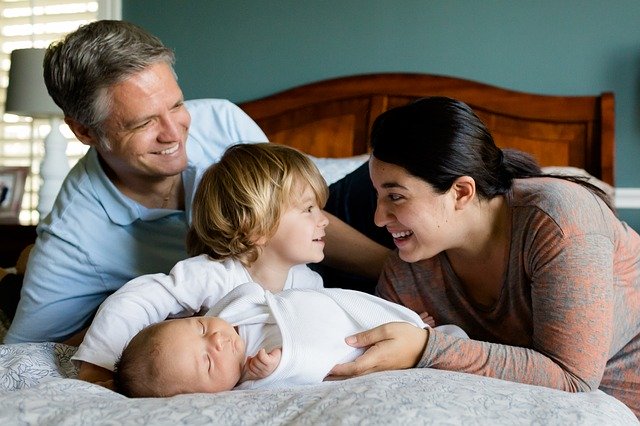Family Development Theory
Duvall’s Family Development Theory
According to Duvall’s Family Development Theory (1988), families move through stages in a particular order across time after members successfully master tasks for each stage.[1]

This theory was different from other theories during this time because:
“(a) its family life cycle dimension that provides a basis for study of families over time; (b) its emphasis on the developmental tasks of individual family members and of families at every stage of their development; (c) its built-in recognition of family stress at critical periods in development; and (d) its recognition ever since 1947 of the need for services, supports, and programs for families throughout their family life cycles.”[2]
It is important to note that this theory is based on the traditional, nuclear, intact family, which is evidenced by the following stages:[3]
| STAGE | TASKS |
| Married couple without children | Navigating how to live together. Adjusting relationships with families-of-origin and social networks to include a partner. |
| Childbearing families with the oldest child between birth and 30 months. | Preparing and adjusting the family system to accommodate children. Developing roles as parents. Redefining roles with extended families. |
| Families with preschool children. | Socializing, educating and guiding children. Assessing and adjusting parenting roles as children age and more children join the family. |
| Families with school-age children. | Providing guidance to children while collaborating with outside resources (e.g., school, extracurricular activities). |
| Families with adolescents. | Adjusting parent-child relationships with adolescents to provide more independence with safe limits. Tending to parents’ midlife relationship and career issues. |
| Launching families (first to last child is leaving home). | Navigating adult-to-adult relationships with children. Resolving midlife issues. Caring for aging family members. |
| Middle-age families (“empty/spacious nest” to retirement). | Adjusting to being a couple without children living at home. Caring for aging family members. |
| Aging families (retirement to death of both spouses). | Learning new roles related to retirement, becoming grandparents, losing a partner, and health-related changes. |
Key Takeaways
- Duvall’s theory is based on the traditional, nuclear, intact family.
- Families will move through each stage in order across time.
- A family will move from one stage to the next after all members successfully master the tasks within a stage.
- Duvall, E. M. (1988). Family development's first forty years. Family Relations, 37(1) 127-134. ↵
- Duvall, E. M. (1988). Family development's first forty years. Family Relations, 37(1) 127-134. ↵
- Laszloffy, T. A. (2004). Rethinking family development theory: Teaching with the Systematic Family Development (SFD) Model. Family Relations, 51(3), 206-214. ↵

